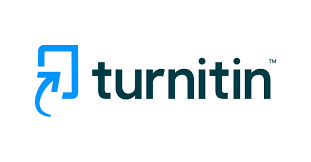THE EFFECT OF IMPROVER ADDITION ON SWEET BREAD MADE FROM WHEAT FLOUR
Abstract
Keywords
Full Text:
PDFReferences
Aprianita A, Purwandari U, Watson B dan Vasiljevic T. 2009. Physico-Chemical Properties of Flours and Starches from Selected Commercial Tubers Available In Australia. International Food Research Journal, 16, 507-520.
BeMiller J N. 2007. Carbohydrate Chemistry for Food Scientists. In Starches, Modified Food Starches, and Other Products From Starches. pp. 195-197. 2 nd eds. AACC inc., MN, USA
BeMiller J, Whistler R. 2009. Starch : Chemistry and Technology. Edisi ke-3. USA. Food Science and Technology. International Series.
Bertolani A C. 2010. Starches Characterization Properties and Applications. United States of America. CRC Press Taylor & Francis Group.
Cui SW. 2005. Food Carbohydrate Physical Properties and Application. CRC Press Taylor & Francis Group.
Cauvain, SP. 2005. Bread Making Improving Quality. CRC Press Boca Raton Boston New York Washington, DC Wooddhead Publishing.
De Garmo ED, W Sullivan WG dan Canada, J.R. 1984. Engineering Economy. New York: Mac Millan Publishing Company.
Eduardo M, Svanberg U, Oliveira J, dan Ahrne L. 2013. Effect of Cassava Flour Characteristics on Properties of Cassava-Wheat-Maize Composite Bread Types. International Journal of Food Science.Article ID 305407, 10 pages http://dx.doi.org/10.1155/2013/305407
Eduardo M, Svanberg U, Oliveira J dan Ahrne. 2014. Effect of Hydrocolloids and Emulsifiers on Baking Quality of Composite Cassava-Maize-Wheat Breads. International Journal of Food Science. Article ID 479630, 9 pages http: //dx.doi .org/ 10.1155 /2014/479630.
Eliasson A C. 2004. Starch in Food. Structure, Function and Applications. England: Woodhead Publishing in Food Science and Technology.
Gray JA, Bemiller J. N. 2003. Bread Staling: Molecular Basis and Control. Comprehensive Reviews in Food Science and Food Safety 2, 1-21.
Hawa TA. 2008. Perubahan Karakteristik Fisikokimia Mocal (Modified Casava Flour). Selama Fermentasi. (Skripsi). Jember. Fakultas Teknologi Pertanian. Universitas Jember.
Hibi Y, Matsumoto T, Hagiwara S .1993, Cereal Chem.; 70 : 671 .
Hoseney RC dan Rogers DE. 1994. Mechanism of Sugar Functionality In Cookies. In Faridi, H. (Ed). The Science of Cookie and Cracker Production, p. 203-226. New York: Avi.
Kartika, Bambang, Puji Hastuti dan Wahyu Supartono. 1988. Pedoman Uji Inderawi Bahan Pangan. UGM. Yogyakarta.
Miyazaki M, Van Hung P, Maeda T, Morita N. 2006. Recent Advances In Application Of Modified Starches For Breadmaking. Food Science and Technology.Vol 17(11): 591-599.
Schoch T. J. 1965. Starch In Bakery Products. Bakers Digest 39(2): 48-57.
Subagio, A. 2006. Ubi Kayu Substitusi Berbagai Tepung - tepungan. Vol 1. Edisi 3. Food Review (april 2006):Hal 18-22.
Subagio, A. 2007. Industrialisasi Modified Cassava Flour (MOCAF) sebagai Bahan Baku Industri Pangan untuk Menunjang Diversifikasi Pangan Pokok Nasional. Jember: Fakultas Teknologi Pertanian, Universitas Jember.
Subagio, A. 2009. MOCAF Inovasi dan Peluang Baru. Trubus. ISSN 0128-0057.
Taggaert P.2004. Starch As an Ingerient: Manufacture and Application. in Eliasson A.C.(ed). Starch in Food. Cambride: Woodhead Publishing Limited, pp.362-393.
Wassermann L. 2009. Bread Improvers Action and Application. Edisi 5. Translated by Dipl. Ing. Christiane Sprinz, Adendorf and with kind support of John Gillespie, Glenbervie, Stonehaven.
Winarno FG. 2004. Kimia Pangan dan Gizi. PT. Gramedia Pustaka Utama, Jakarta.
Yuwono S dan Susanto T. (2001). Pengujian Fisk Pangan. Unesa University Press, Surabaya.
Zallie J, Boundbrook, N J, Trimble R dan Suffolk V. 1984. Bread Containing Wxsu2 Genotype Starch as Anti-Stalent. U.S. patent 4,615,888.
Zallie JP. 1988. The Role and Function of Starches in Microwaveable Food Formulation. Microwave Foods.
Zanoni B, Peri C dan Bruno D. 1995. Modelling of Browning Kinetics of Bread Crust During Baking. LWT- Food Science and Technology 28: 604–609.
Zobel H.F, Kulp K. 1996. The Staling Mechanism, In: R.E. Hebeda, H.F. Zobel (Eds.), Baked Goods Freshness: Technology, Evaluation and Inhibition of Staling, Marcel Dekker, Inc., New York, USA, pp. 1-64.
DOI: http://dx.doi.org/10.33512/fsj.v1i1.6193
Refbacks
- There are currently no refbacks.

This work is licensed under a Creative Commons Attribution-ShareAlike 4.0 International License.











